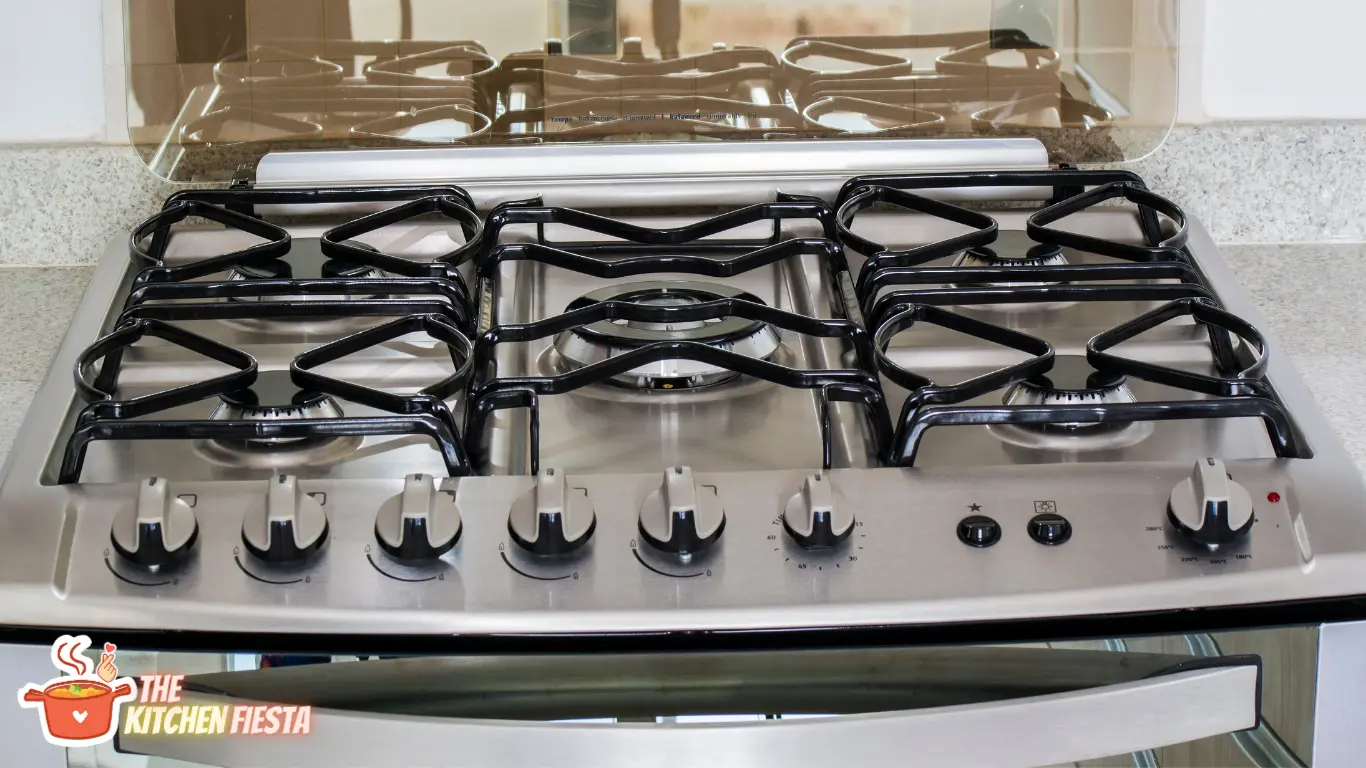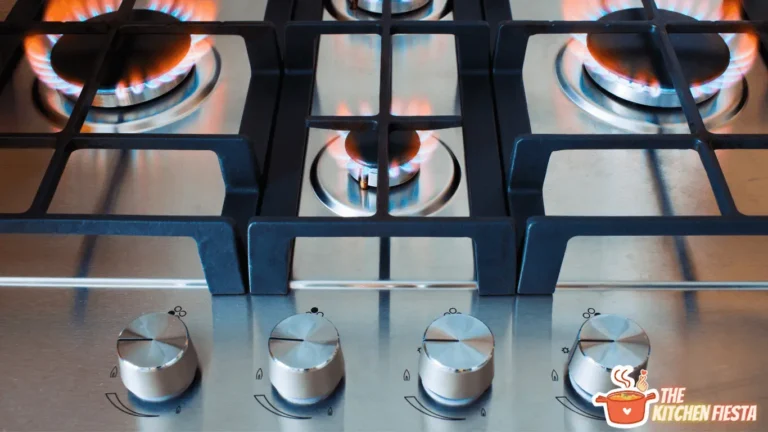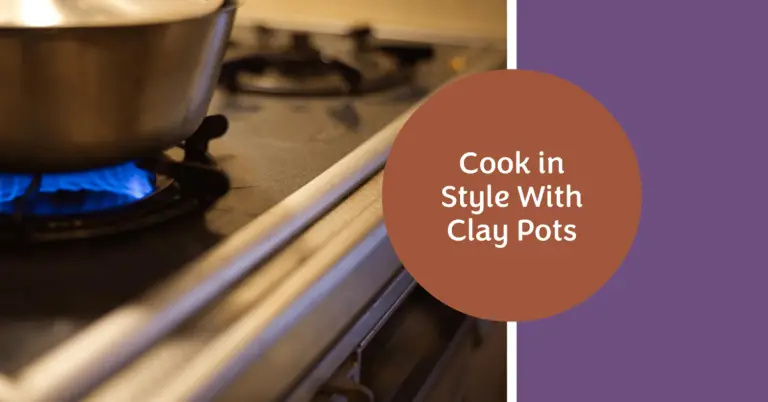Do All Stove Tops Lift Up? Exploring the Different Types of Stove Tops

Stove tops come in various styles and designs, each with unique features. One of the most convenient features of some stove tops is the ability to lift up the cooktop for easy cleaning. But do all stove tops have this feature? The answer is no.
Many electric ranges manufactured in 1992 and later have a lift-up porcelain cooktop that is easy to clean. These cooktops are supported by twin support rods and a torsion bar, making them easy to lift with just one finger. On the other hand, gas ranges may or may not have a lift-up cooktop. The base of the gas range may be attached with screws, and the burner grates, caps, and bases must be removed before the top can be lifted.
Not all stove tops have the lift-up feature, and it is essential to check the manufacturer’s instructions before attempting to lift the cooktop. Lifting the cooktop on a stove that is not designed to do so can damage the appliance and pose a safety hazard. In the following sections, we will explore the different types of stove tops and their unique features.
The Basics Of Stove Tops
Stove tops are an essential part of any kitchen, and it’s important to understand their features and functionalities. One common question about stove tops is whether they lift up or not. This section will briefly overview stove tops and explain which types can be lifted up for cleaning.
Different types of stove tops are available in the market, such as gas, electric, Induction, and ceramic. Each type of stovetop has its advantages and disadvantages. Gas stove tops are famous for their quick heating and precise temperature control, while electric stove tops are known for their easy-to-clean surface and even heat distribution. Induction stove tops are energy-efficient and safe, whereas ceramic ones are sleek and modern-looking.
Not all stove tops are created equal when it comes to lifting up stove tops for cleaning. Gas stove tops can be lifted by removing the burner grates, caps, and bases. On the other hand, electric stove tops can be lifted up only if they have a lift-up feature. This feature allows the cooktop to be lifted up for easy cleaning, providing access to the porcelain subtop without wires or pipes to clean around.
It’s important to note that not all electric stove tops have a lift-up feature. Some models require a flat tool, like a butter knife, to wedge between the top and the body to separate them. On the other hand, Induction and ceramic stove tops cannot be lifted up for cleaning. These stovetops have smooth, flat surfaces that cannot be lifted or removed.
Lifting Mechanism of Stove Tops
Stove tops have different lifting mechanisms depending on the model and brand. Some stove tops lift up, while others do not. Here are some common lifting mechanisms of stove tops:
- Torsion Bar Mechanism: This mechanism is commonly found in electric ranges. It uses a torsion bar and twin support rods to lift the cooktop. The torsion bar provides the force to lift the cooktop while the twin support rods keep it in place. This mechanism is easy to use and requires minimal effort to lift the cooktop.
- Hinge Mechanism: This mechanism is commonly found in gas ranges. It uses hinges to lift the cooktop. The hinges are attached to the range body and the cooktop, allowing it to be lifted easily. This mechanism is also easy to use and requires minimal effort to lift the cooktop.
- Lift and Lock Mechanism: This mechanism is commonly found in newer electric ranges. It uses a lift and lock mechanism to lift the cooktop. The cooktop is lifted by pulling a lever, which is locked in place when raised. This mechanism is easy to use and provides a secure hold on the cooktop.
- Lift and Support Mechanism: This mechanism is commonly found in older electric ranges. It uses a lift and support mechanism to lift the cooktop. The cooktop is lifted by pulling it up and supported by rods holding it in place. This mechanism requires more effort to lift the cooktop, but it provides a secure hold on the cooktop.
In summary, stove tops have different lifting mechanisms depending on the model and brand. The most common mechanisms are the torsion bar, hinge, lift and lock, and lift and support mechanisms. These mechanisms are easy to use and provide a secure hold on the cooktop.
Safety Measures While Lifting Stove Tops
Preparation
Before lifting a stovetop, it is essential to take the necessary safety measures to avoid accidents. Wear appropriate clothing, such as non-slip footwear and gloves, to prevent slips and burns. Clear the area around the stovetop of any objects that could get in the way or cause a tripping hazard.
If the stovetop is electric, turn off the power supply to prevent electrocution. If the stove top is gas, turn off the gas supply to prevent gas leaks. Letting the stove top cool down entirely before lifting it is also essential.
Execution
When lifting the stovetop, it is essential to use proper lifting techniques to avoid injury. Lift with the legs, not the back, and avoid twisting the body while lifting. If the stovetop is heavy, consider using a lifting aid, such as a dolly, or a second person, to assist with the lifting.
Be sure to lift the stove top evenly to avoid causing damage to the stove or the surrounding area. If the stovetop is attached to the oven, detach it properly before lifting it.
Post-Lifting Care
After lifting the stovetop, please take the necessary steps to ensure it is properly secured and functioning. Inspect the stove top for any damage or defects that may have occurred during the lifting process.
If the stove top was detached from the oven, reattach it properly to prevent accidents or damage. If the stove top was lifted to access the burners or other components, reassemble them correctly before using the stove.
Types of Stove Tops and Their Lifting Mechanisms
Stove tops are an essential part of any kitchen, and they come in different types and lifting mechanisms. This section will discuss the various stove top types and how they lift up.
Electric Stove Tops
Electric stove tops are popular for many homeowners because they are easy to use and clean. They come in different sizes and styles, including coil, smooth top, and Induction.
Electric stove tops lift up in different ways depending on the model. Some have a lift-up mechanism that allows the user to tilt the top for easy cleaning, while others have a hinge mechanism that lifts the top up and out of the way.
Gas Stove Tops
Gas stove tops are another popular choice for homeowners who prefer cooking with gas. They come in different sizes and styles, including sealed burners, open burners, and griddle tops.
Gas stove tops lift up in different ways depending on the model. Some have a lift-up mechanism that allows the user to tilt the top for easy cleaning, while others have a hinge mechanism that lifts the top up and out of the way.
Benefits of Lifting Stove Tops
Lifting stove tops is common in many modern electric and gas ranges. While not all stovetops lift up, those that do offer several benefits that make them a popular choice for homeowners. This section will explore the benefits of lifting stove tops, including cleaning, maintenance, and inspection.
Cleaning
One of the primary benefits of lifting stove tops is cleaning the cooktop much easier. With a lift-up cooktop, homeowners can easily access the area under the burners, which is often difficult to reach with a traditional cooktop. This makes cleaning up spills, grease, and other debris that may accumulate over time much more accessible.
In addition, lift-up cooktops are often made of materials that are easy to clean, such as porcelain or glass, which can be wiped clean with a damp cloth. Some models even have removable grates that can be washed in the sink or dishwasher for convenience.
Maintenance
Another benefit of lifting stove tops is that it makes maintenance much more accessible. With a lift-up cooktop, homeowners can easily access the components under the burners, such as the igniter, gas valve, and thermostat. This makes it much easier to perform routine maintenance tasks, such as replacing faulty components or cleaning the burners.
In addition, lift-up cooktops are often designed with safety in mind, with features such as automatic shut-off valves that prevent gas leaks and other hazards. This makes them a reliable and safe choice for homeowners who want to ensure their stove is always in good working condition.
Inspection
Finally, lifting stove tops makes it easier to inspect the cooktop for signs of wear and tear, such as cracks, chips, or other damage. This is particularly important for homeowners who use their stoves frequently, as wear and tear can reduce efficiency and performance over time.
By lifting the cooktop, homeowners can quickly inspect the burners, grates, and other components for signs of damage or wear and take action to repair or replace them as needed. This can help ensure that the stove continues operating efficiently and safely for years.
Lifting stove tops offers several benefits, including easier cleaning, maintenance, and inspection. While not all stovetops lift up, those that do are popular for homeowners who want a reliable and efficient cooking appliance that is easy to maintain and clean.
Potential Risks and Precautions
Risk of Injury
Stove tops that lift up can pose a risk of injury if not handled with care. A lifted stove top can fall back down if not properly supported, causing burns or other injuries. Additionally, the weight of the stovetop can be heavy and may cause strain or injury when lifting or lowering it.
Risk of Damage
Lifting up a stovetop can also cause damage to the stove or surrounding area if not done correctly. The hinges or supports that hold the stove top in place may become damaged or misaligned, causing the stove top not to sit correctly. This can lead to scratches or other damage to the stove or surrounding countertops.
Precautionary Measures
Several preventive measures should be taken to prevent injury or damage when lifting up a stovetop. These include:
- Use caution when lifting or lowering the stove top, ensuring it is properly supported and not too heavy to handle.
- Check the hinges or supports regularly to ensure they are in good condition and properly aligned.
- Keeping the area around the stove top clear of any items that may interfere with lifting or lowering it.
- Using protective gloves or other safety equipment when handling the stovetop.
Following these preventive measures can significantly reduce the risk of injury or damage when lifting up a stovetop.
Professional Assistance vs DIY
When lifting a cooktop, homeowners may wonder whether they should seek professional assistance or attempt a DIY approach. While some stove tops are liftable, others require professional assistance due to safety concerns.
Lifting a cooktop may be a feasible task for those who are comfortable with DIY work and have experience with home repairs. However, it is essential to note that lifting a cooktop can be dangerous, especially if the stove is not properly disconnected from the gas and electrical sources. Homeowners should take the necessary safety precautions and follow the manufacturer’s instructions carefully.
On the other hand, homeowners who are uncomfortable with DIY work or lack experience with home repairs should seek professional assistance. A professional technician will have the necessary tools and expertise to safely lift the cooktop and make any necessary repairs or replacements.
It is essential to consider the cost of professional assistance versus the cost of a DIY approach. Homeowners who lift the cooktop themselves may save money on labor costs. Still, they may also risk damaging the stove or causing safety hazards. Additionally, homeowners may spend more money in the long run if the stove requires any repairs or replacements.
Conclusion
In summary, not all stovetops lift up. However, many modern stovetops have a lift-up feature for easier cleaning. If you are unsure whether your stove top has this feature, you can test it by shifting it slightly from the front edge or pushing it down to feel or hear a click as the safety is released. Some models may require a flat tool like a butter knife to wedge between the top and the body to separate them.
It is important to note that lifting up a stovetop requires caution and care to avoid damaging any wires or pipes that may be attached. Always refer to the manufacturer’s instructions or consult a professional if you need help lifting your stovetop properly.
Additionally, when bringing food to a party, it is best to coordinate with the host in advance if you require access to their stove or oven. It is always better to bring food that is already cooked and can be served at room temperature to avoid inconvenience or complications.
Knowing whether your stove top lifts up can save you time and effort in cleaning spills that pass below the burners. If your stovetop does not have a lift-up feature, consider using a cooktop cleaner to remove any spills or stains.
Frequently Asked Questions
How do I lift up the stove top on my Frigidaire?
To lift up the stovetop on a Frigidaire range, locate the two metal clips on the front of the stovetop. Push the clips back with a flathead screwdriver, then lift the front of the stove top up. Once the front is lifted, you can pull the stove top towards you to remove it.
What is the process for lifting up a gas stove top?
First, to lift up the stove top on a gas range, ensure the gas supply is turned off. Remove the grates and burner caps from the stovetop. Then, locate the screws or clips that hold the stove top in place and remove them. Lift the front of the stove top up and pull it towards you to remove it.
How do I open the top of my GE gas stove for cleaning?
First, to open the top of a GE gas stove for cleaning, ensure the gas supply is turned off. Remove the grates and burner caps from the stovetop. Then, locate the screws or clips that hold the stove top in place and remove them. Lift the front of the stove top up and pull it towards you to remove it.
What’s the proper way to remove a stovetop?
First, remove the stove top and ensure the gas or power supply is turned off. Remove the grates and burner caps from the stovetop. Then, locate the screws or clips that hold the stove top in place and remove them. Lift the front of the stove top up and pull it towards you to remove it.
Is it possible to lift the top of a Samsung gas stove?
Yes, lifting the top of a Samsung gas stove is possible. To do so, first, make sure the gas supply is turned off. Remove the grates and burner caps from the stovetop. Then, locate the screws or clips that hold the stove top in place and remove them. Lift the front of the stove top up and pull it towards you to remove it.
How do I lift the top of my Hotpoint stove?
To lift the top of a Hotpoint stove, locate the two metal clips on the front of the stovetop. Push the clips back with a flathead screwdriver, then lift the front of the stove top up. Once the front is lifted, you can pull the stove top towards you to remove it.






